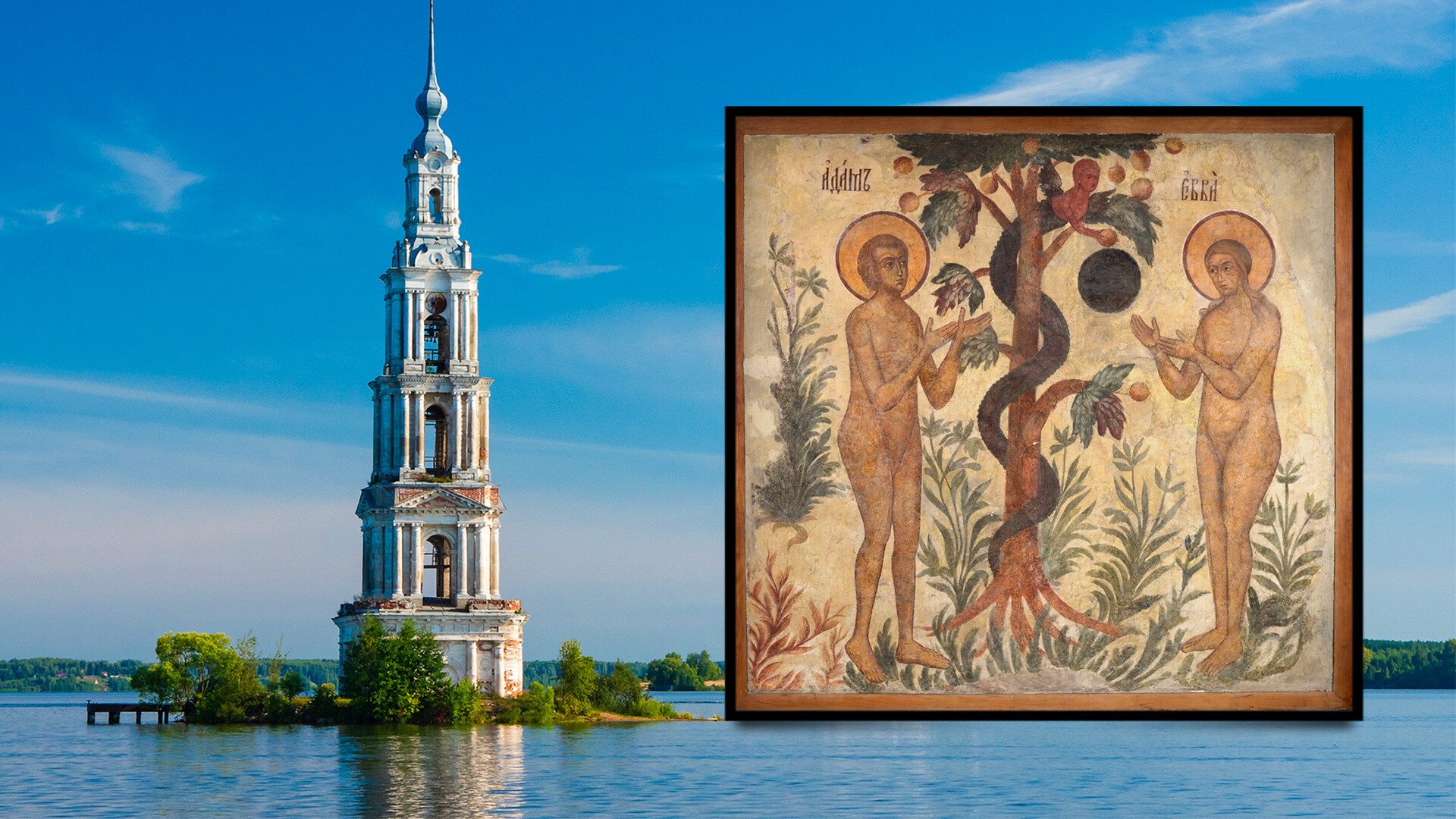
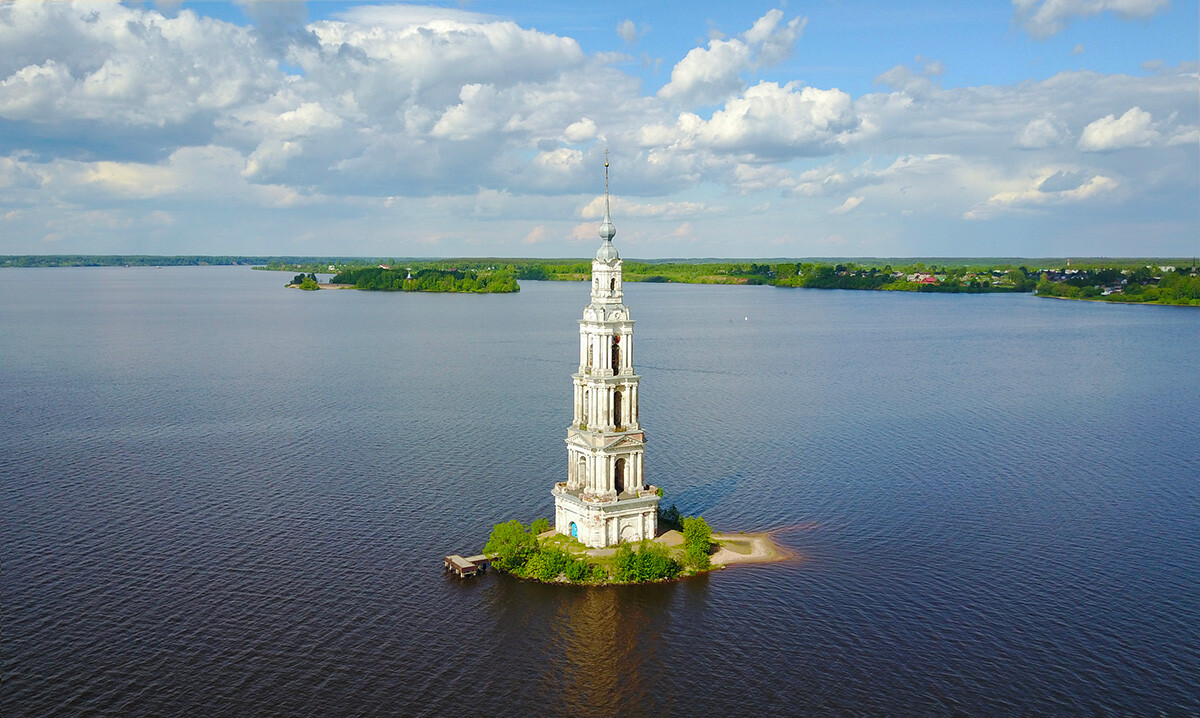
The Kalyazin bell tower
Legion MediaThe flooded bell tower in the town of Kalyazin in the Tver Region, roughly about 200 km from Moscow, is now a striking and unusual landmark. Tourists taking pictures of it have no idea that the ruins of a once thriving monastery lie hidden underneath the surface of the water.
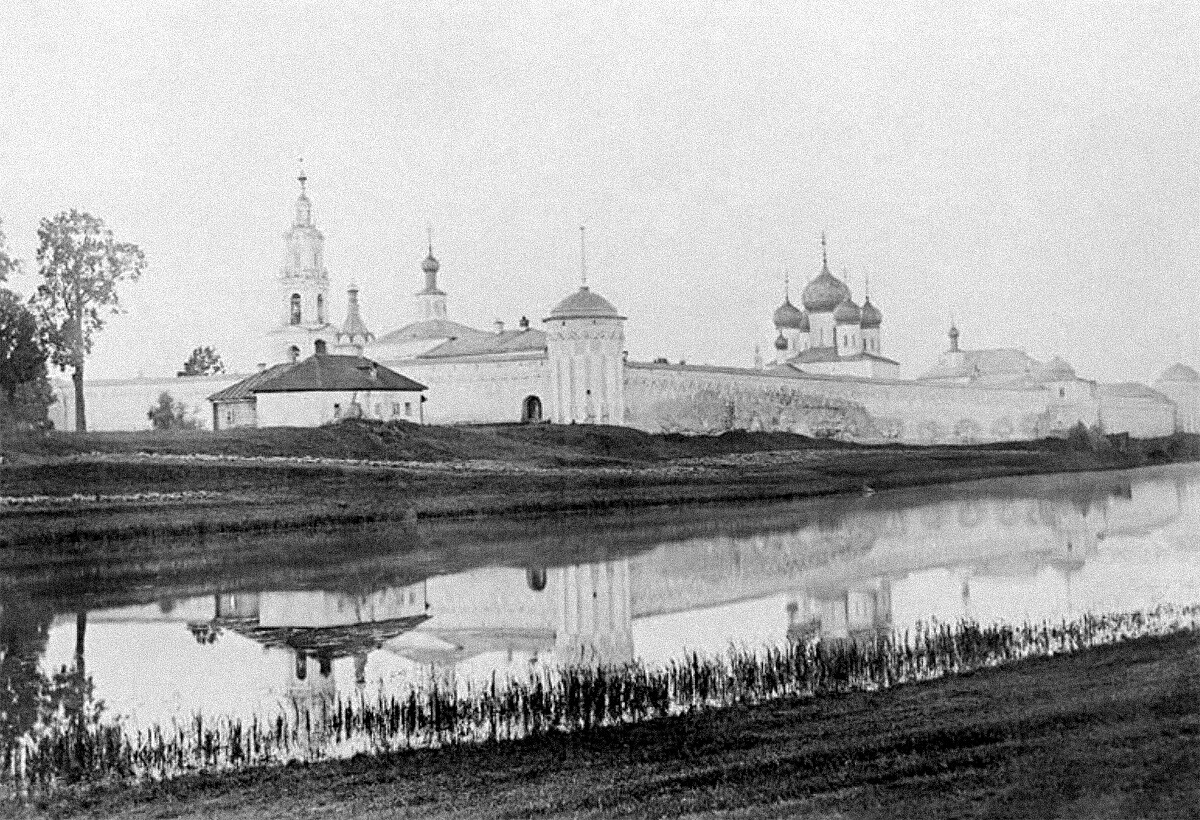
Trinity Makaryev Monastery in the 1920s
The Shchusev Museum of ArchitectureThe Trinity Makaryev Monastery was founded in 1434, but its main brick buildings appeared later in the 16th century. It was once an important example of medieval Russian church architecture and a thriving monastery. Essentially, the town of Kalyazin grew up around it.
With its mighty walls, the monastery witnessed important historical events and even put up resistance to the troops of the False Dmitry II during the Time of Troubles (1598-1613). Many tsars, from Ivan the Terrible to Peter the Great and Alexander II came here to pay their respects to the relics of the monastery’s founder, the Venerable Macarius (“Makary” in Russian) of Kalyazin. Tsar Alexei (1629-1679) even granted the monastery a considerable sum of money.
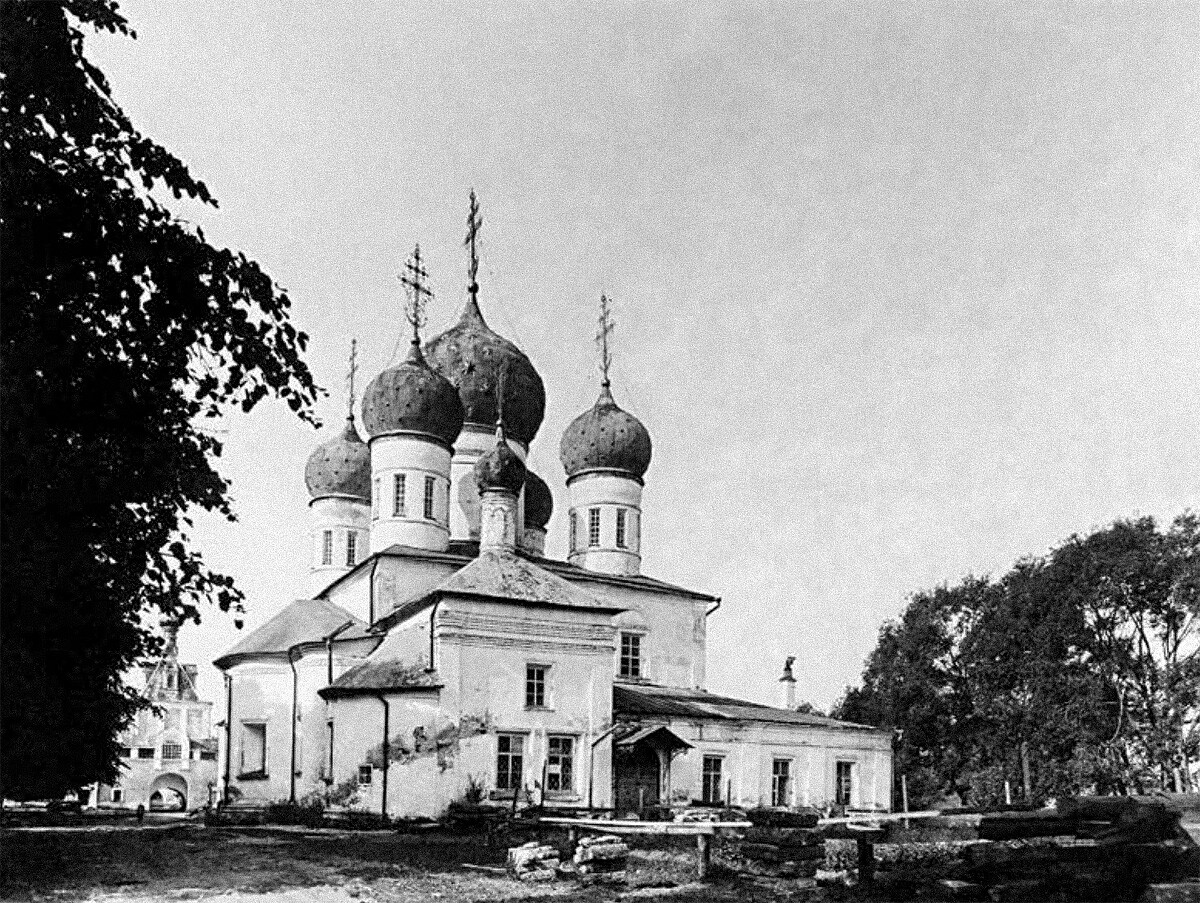
Trinity Cathedral, 1920s
The Shchusev Museum of ArchitectureSoviet authorities closed the Trinity Makaryev Monastery in 1920. As was the case with many other churches and monasteries across Russia, the monastery was turned into a local history museum, and it later housed an orphanage for homeless children, as well as a holiday retreat for workers.
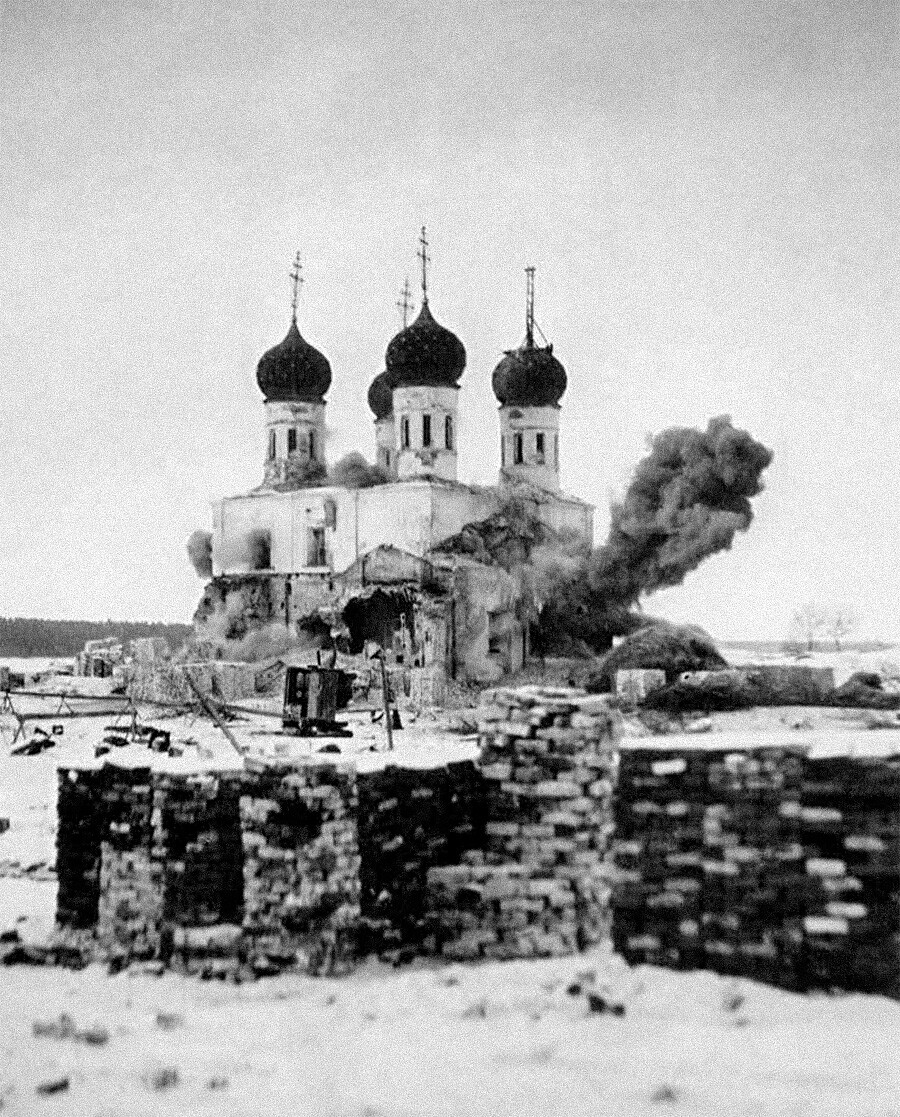
Demolition of the monastery, 1940
The Shchusev Museum of ArchitectureIn 1940, most structures in the monastery were demolished and subsequently flooded. Today, only the bell tower and a couple of the so-called “monastery islands” remain. The same fate befell a part of Kalyazin and numerous villages nearby. This was due to the construction of the Uglich hydroelectric power plant on the Volga River that created the Uglich reservoir. This project led to about 30 more ancient churches and monasteries being submerged.
Fortunately, restorers managed to rescue unique medieval frescoes from the Trinity Makaryev Monastery.

Interior of the Trinity Cathedral
The Shchusev Museum of ArchitectureThe finest court iconographers painted the frescoes of the Trinity Cathedral in the Makaryev Monastery in the mid-17th century. Working on wet plaster, they adorned the walls of the cathedral with scenes from the Old Testament, including “The Expulsion from Paradise” and “Construction of the Tower of Babel”.
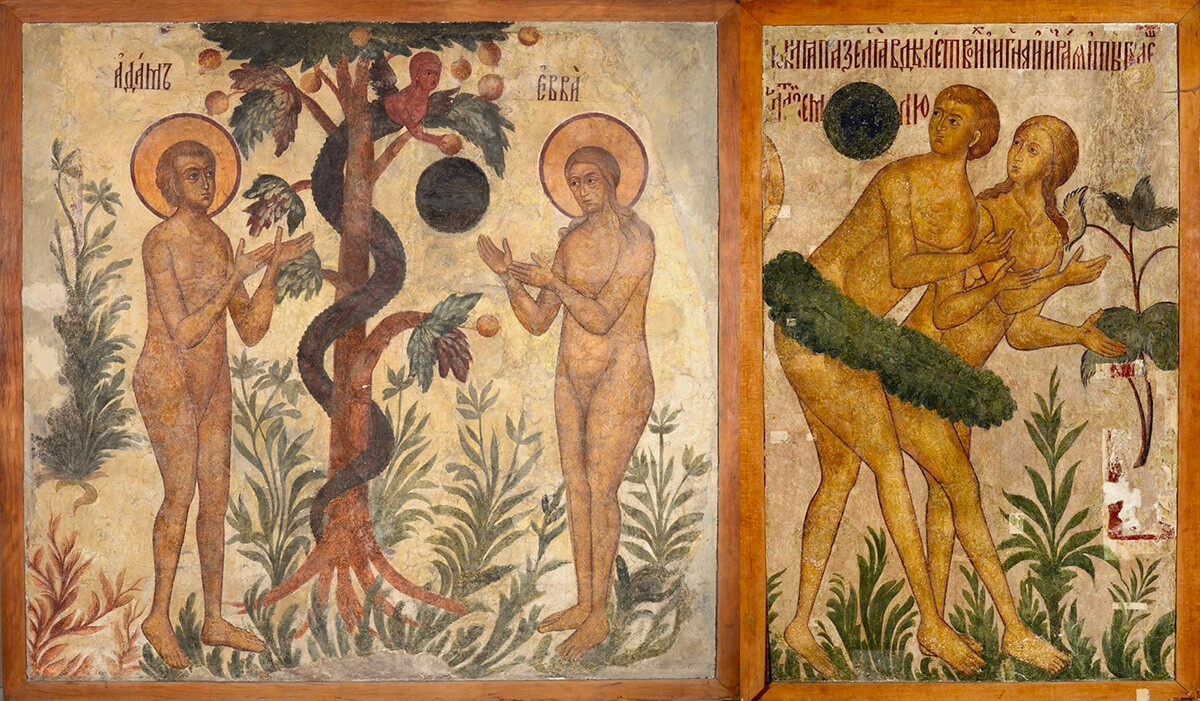
Monastery frescoes. On the left: “The Fall”; on the right: “The Expulsion from Paradise”
The Shchusev Museum of Architecture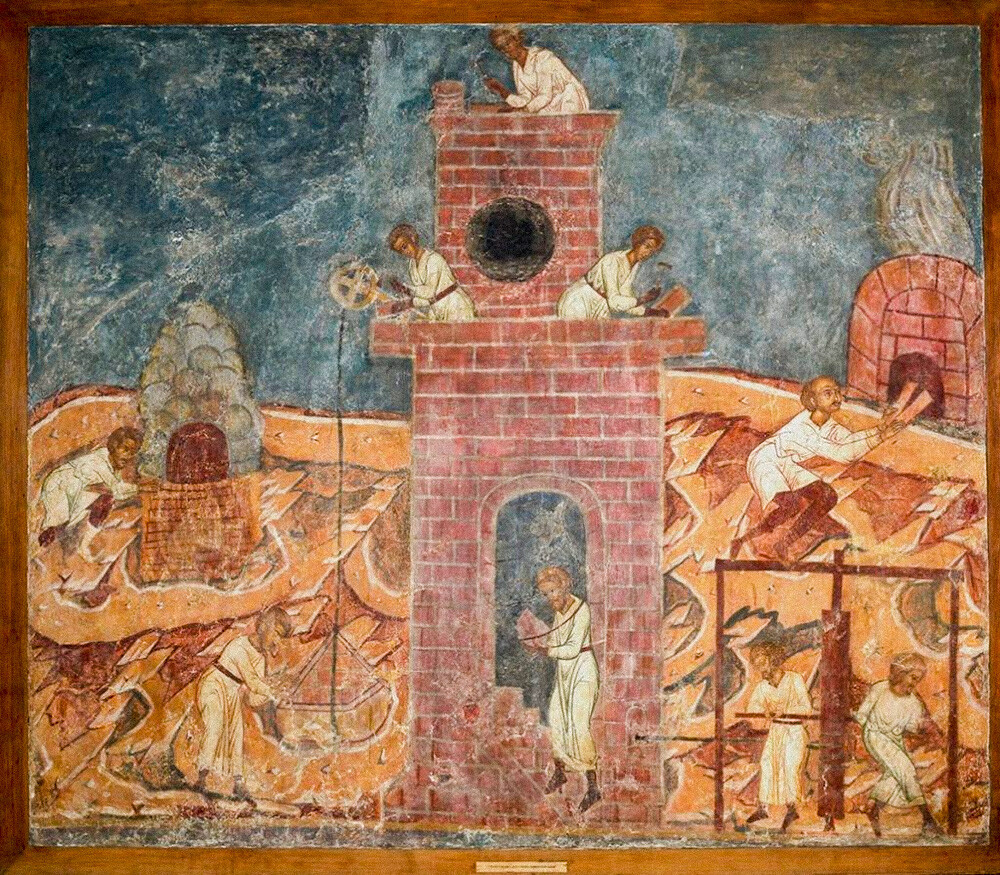
“Construction of the Tower of Babel”
The Shchusev Museum of ArchitectureThey also depicted very rare non-canonical subjects (apocrypha) about the Mother of God (for instance, her parents Joachim and Anne departing the temple). The frescoes also featured scenes from the life of Christ, a great variety of saints, and even the monastery’s benefactor, Tsar Alexei.
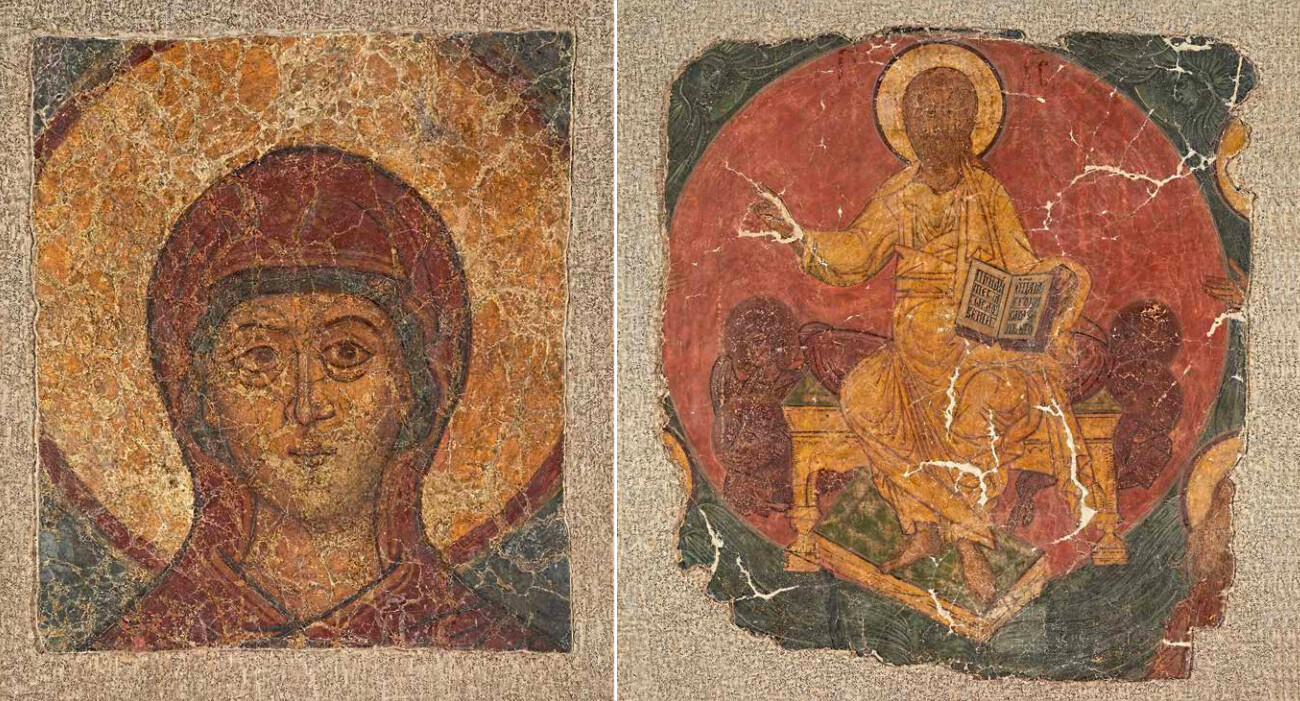
On the left: “The Mother of God”. On the right: “The Savior Enthroned Surrounded by the Hosts of Heaven”.
The Shchusev Museum of Architecture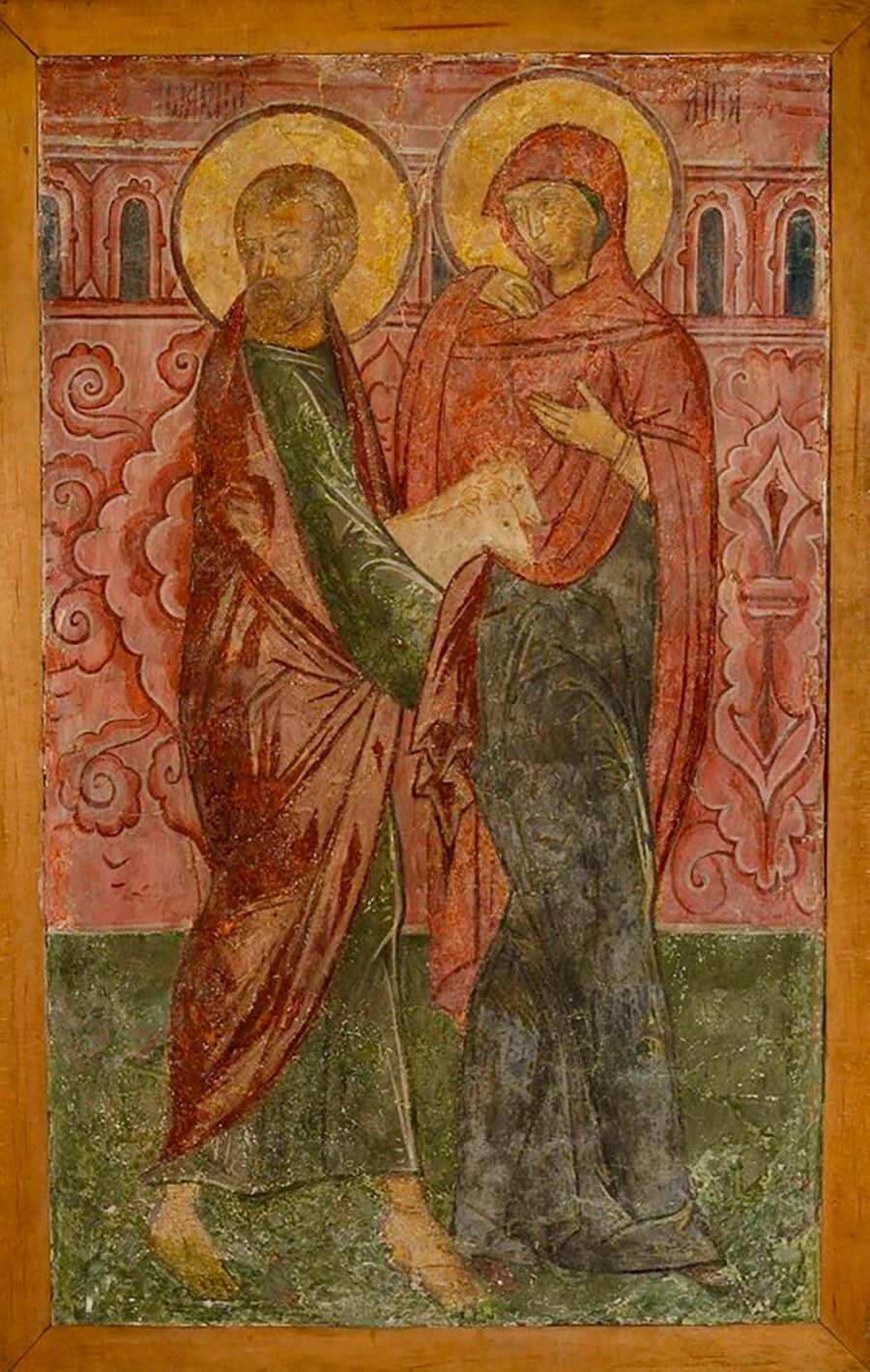
“Joachim and Anne with a sacrificial lamb”
The Shchusev Museum of ArchitectureThe master painters also portrayed a fairly rare subject in Russian church art – the Apocalypse. For instance, there is an exceptional and very rare fresco of “The Pale Horse and the Black Horse”. Altogether there were about 1,000 square meters of frescoes, and they have tremendous historical and artistic value.
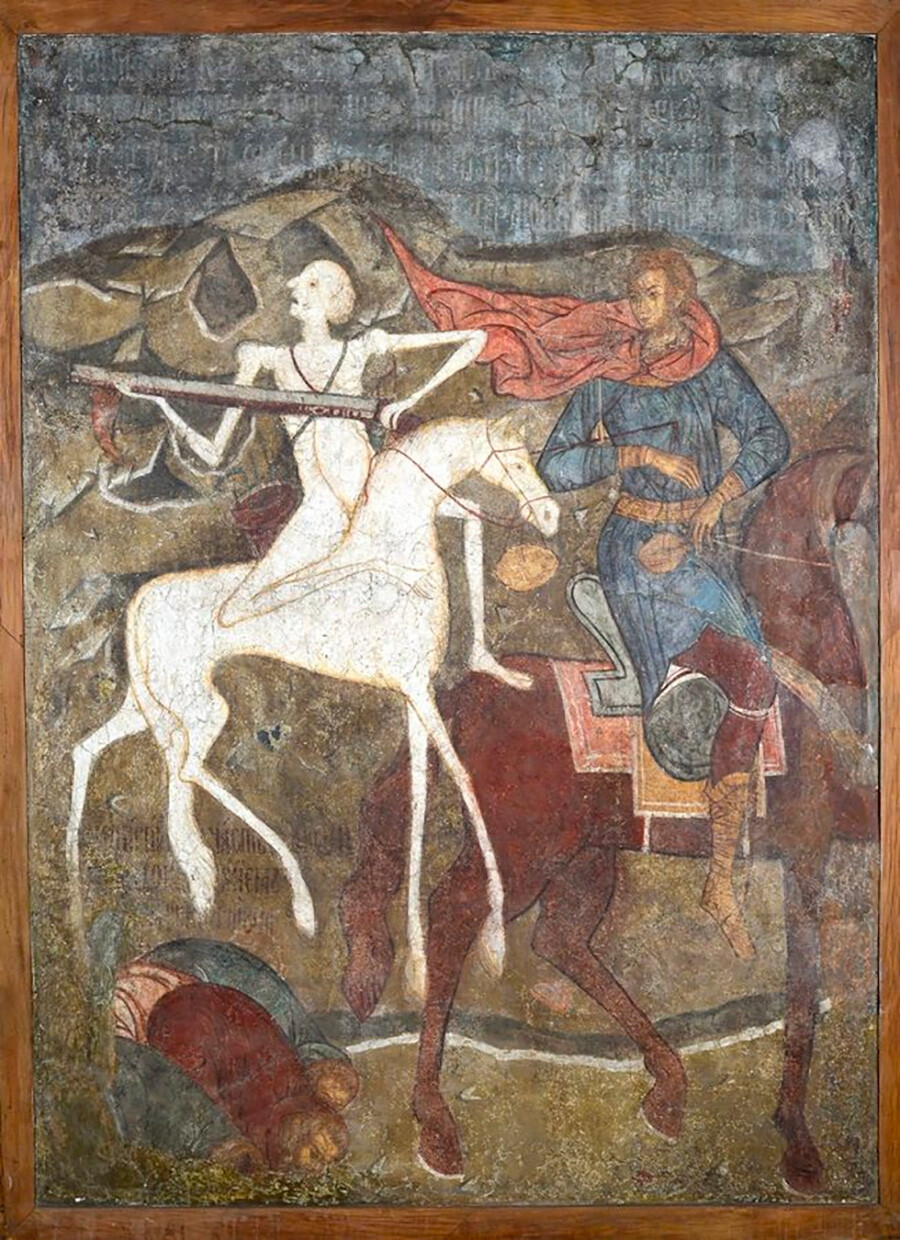
“The Pale Horse and the Black Horse”
The Shchusev Museum of ArchitectureThe story of how the frescoes were saved is just as amazing as the frescoes themselves. In December 1939, experts from the Museum of Architecture that’s under the auspices of the USSR’s Academy of Architecture were sent to the Kalyazin Monastery, just as it was being prepared for demolition.
In temperatures of minus 30 degrees Celsius, in the unheated and dark church, they spent the entire winter heroically removing the frescoes from the walls. This is how they went about it: First, they made incisions that were 6-8 cm wide around the perimeter of an image, and then they used mallets to slowly separate the plasterwork with the frescoes from the underlying brickwork. On the surfaces they applied a protective covering of gauze and carefully laid out the detached frescoes on the floor.
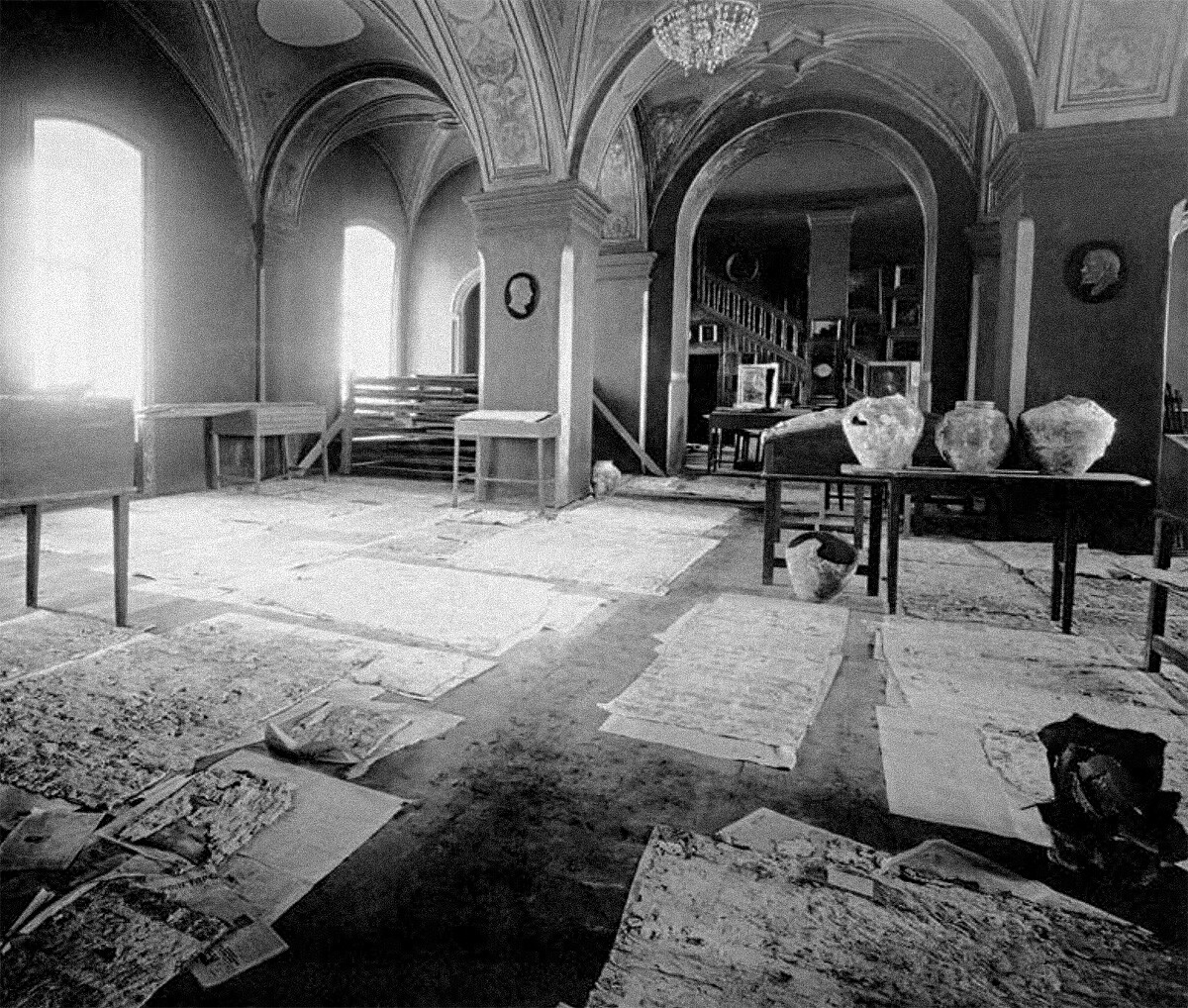
Frescoes laid out on the floor in the makeshift restoration workshop inside the Epiphany Church in Kalyazin
The Shchusev Museum of ArchitectureThen, on sheets of tarpaulin they transported the fragments to the other side of the Volga River by boat – to the still dry part of Kalyazin. There, in the heated Epiphany Church the paintings were mounted on new supports and crumbling parts were glued together.
Experts under the direction of restorer Pavel Yukin rescued 150 square meters of the wall paintings. The majority of the frescoes ended up in the collection of the Museum of Architecture, while several fragments were sent to other museums.
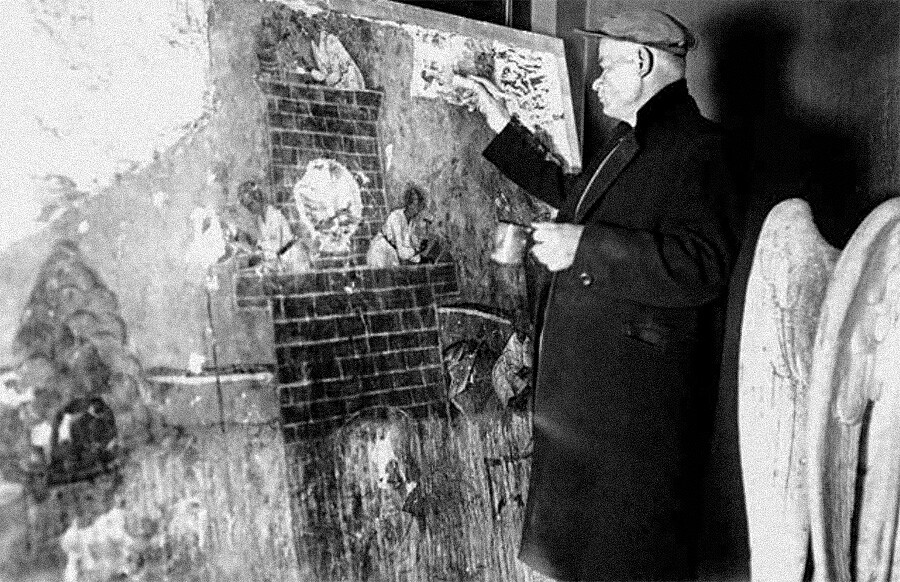
Pavel Yukin at work, toning areas of paint loss in the composition “Construction of the Tower of Babel” after it was mounted on a new support
The Shchusev Museum of ArchitectureBecause of World War II, the frescoes weren’t put on exhibition. Instead, they remained in storerooms where they were fixed to wooden lattice panels. Restoration only began more than 20 years later. From 1967 to 1974 a new restoration team took up this project, removing dirt and mold from the frescoes. It also turned out that Yukin and his team had decided to touch up some of the lost portions of the frescoes to make them look more appealing. The new team of restorers removed all of these interventions.
In addition, it turned out that in the 1940s a starch-based glue had been used to preserve the frescoes, so there was biological contamination of the surface. Flaking and fractures were also noticeable. In the 1980s, under the direction of Vladimir Bury, experts understood a new stage of meticulous restoration, which lasted many years.
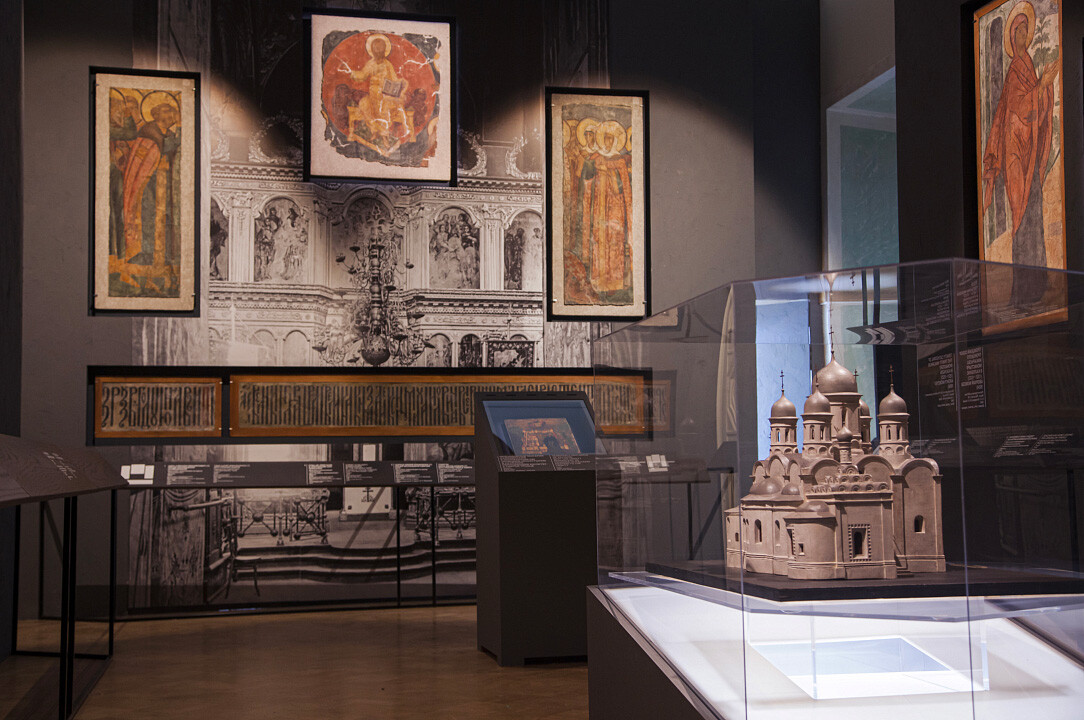
The frescoes displayed at the Museum of Architecture
The Shchusev Museum of ArchitectureA large number of the rescued frescoes were publicly displayed for the first time only in 2020. “Kalyazin - Frescoes from a Submerged Monastery” exhibition is now part of the permanent display of the Shchusev Museum of Architecture in Moscow.
Dear readers,
Our website and social media accounts are under threat of being restricted or banned, due to the current circumstances. So, to keep up with our latest content, simply do the following:
If using any of Russia Beyond's content, partly or in full, always provide an active hyperlink to the original material.
Subscribe
to our newsletter!
Get the week's best stories straight to your inbox